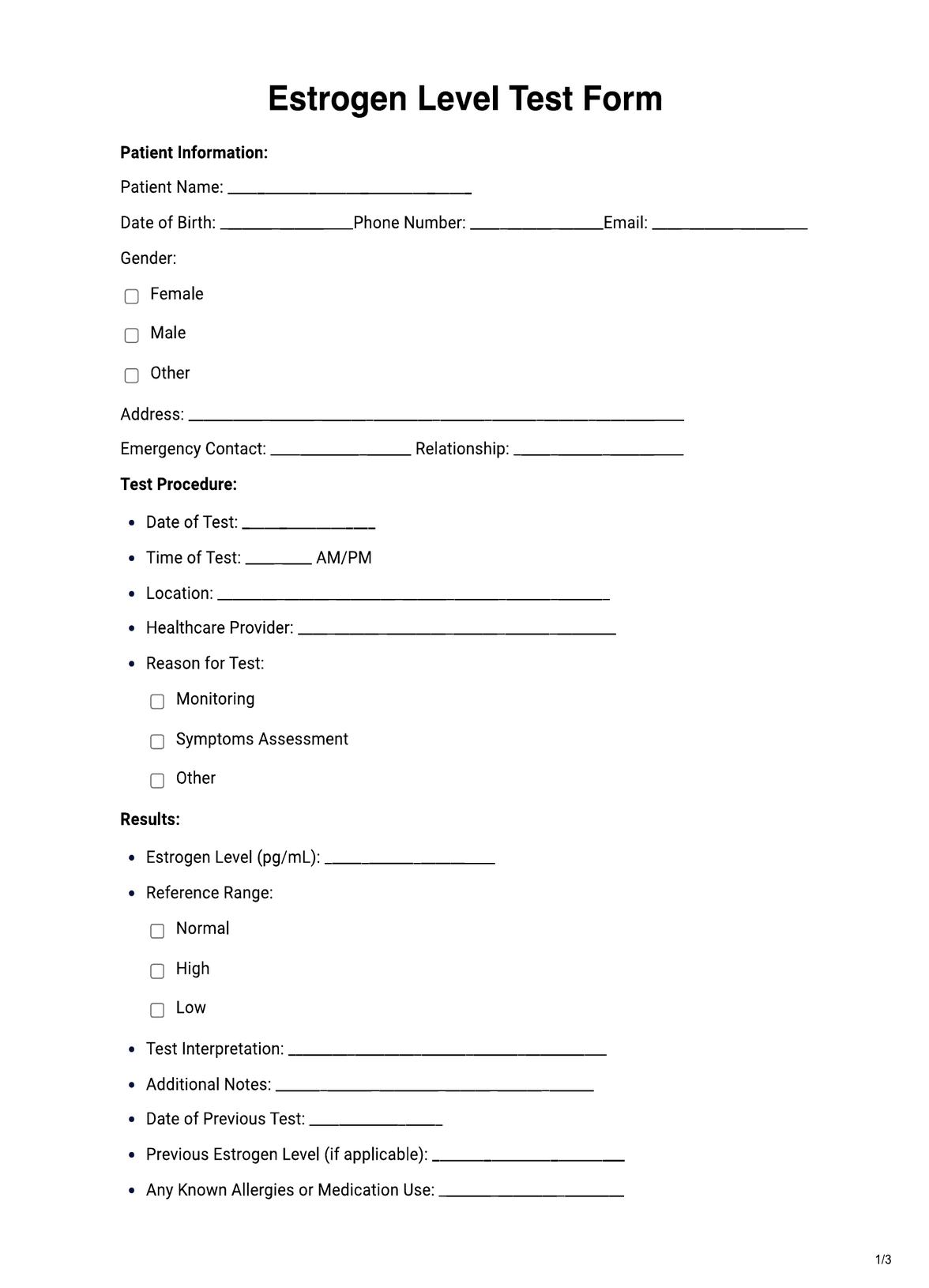Estrogen level tests may be requested by various healthcare professionals, including gynecologists, endocrinologists, primary care physicians, reproductive medicine specialists, and oncologists. Individuals may also request the test if they are experiencing symptoms related to hormonal imbalances or as part of routine health check-ups.

Estrogen Levels
Learn about the Estrogen Levels Test and how it works. Monitor your hormonal health with an Estrogen Levels Test!
Estrogen Levels Template
Commonly asked questions
The test involves a simple blood draw, usually from the arm. The collected blood sample is sent to a clinical laboratory for analysis. In the lab, specialized equipment measures the concentration of estrogen hormones, primarily estradiol, in the bloodstream. Results are typically provided in picograms per milliliter (pg/mL).
Healthcare professionals interpret the results based on the patient's age, sex, and specific health circumstances to make informed decisions about treatment or further testing.
The actual blood draw for the Estrogen Levels Test is relatively quick and usually takes a few minutes. However, the process may take longer, including waiting for results and consultation with a healthcare provider. Depending on the laboratory's processing time and healthcare provider's scheduling, patients can typically expect to receive their test results within a few days to a week.
EHR and practice management software
Get started for free
*No credit card required
Free
$0/usd
Unlimited clients
Telehealth
1GB of storage
Client portal text
Automated billing and online payments











